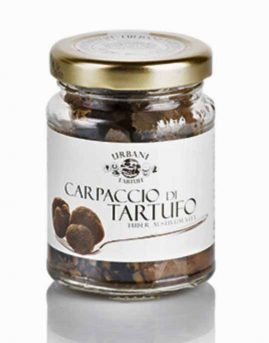Sara Waxman, OOnt, is an award-winning restaurant critic, best-selling cookbook…
You say Truffle, I say Tartufi. How can something so rare, so expensive, so delicious, so wondrous, come from such humble origins?
The truffle is a fungus that grows underground, feeds off the water and minerals of the soil and lives in symbiosis with the roots of trees such as oak, hazelnut, or linden. Truffles ripen in stages in a four-hour period, and give off three distinct aromas: first musky, then mushroom-y, and finally a mature, sweet garlic, vanilla and pepper aroma. It is an invaluable truffle hound that can sniff out the first or second stage of ripeness. Alas, if a truffle remains undiscovered, they say it will live for only 12 days.

In the tiny village of Scheggino, Umbria, Carlo Urbani first began trading these truffles in the late 1800’s. Today, the focal point in this town of 400 is the Urbani Truffle Museum built by Olga Urbani, to honour her father Paulo. I wanted to do something else, to be a writer,” she says, “but my father let me know there is no choice. I quit university, came to the company and started working. In the beginning, it was very tough. He was very severe; everything I was doing was not enough. We started a kind of friendly war, a positive challenge between us: he was doing one thing, I was doing two things, three things. But he never said, Bravo.”

Was it her dream to be head of this vast international empire? “One day I heard him talking to someone in another room, saying, ‘I built this empire, but I only have Olga and Olga is a woman.’ I was so upset, so mad, I opened the door and I started screaming at him, ‘you don’t think a woman can do what you do, I can do it better than you.’”
Olga designed and built the Urbani Truffle Academy, a glass structure transparent on all four sides, completely immersed in the surrounding forests rich with precious truffles underneath. During a luxurious truffle laden six-course lunch at the open dining counter, Olga showers white truffle shavings over my risotto, and a parade of spectaculars follows, with truffles enhancing every course. A stunningly elegant, empathetic and articulate woman, in a wardrobe of couture and diamonds, she seems almost out of place in Sant’anatolia di narco and, yet, it is appropriate since this is where the truffle-loving world comes to her, the Queen of Truffles.
She has created important programs of social responsibility and charitable foundations. One is The Urbani Truffle Academy Grant, an annual chef’s scholarship to promote international awareness, inspiration and strengthen the relationship between chefs and truffles, offering a week-stay to chefs to become fully immersed in the truffle world.
On Manhattan’s upper west side, the Urbani Tartufi retail store sparkles with a multitude of products available for online purchase—another brainchild of Olga’s. It is from this location that truffle orders to fine restaurants are hand-wrapped in a checkered towel and delivered on a yellow Italian motorcycle. “Now the family all manages the company together and the president is my uncle Bruno. Last year Urbani manufactured 120 tons of truffles, between white and black winter and black summer truffles. It was a great season for quantity and quality.” Today, the cost of white truffles is $6,000 a pound, and $3,000 for black truffles.

The unmistakable and illusive taste and perfume of truffles is intoxicating. And soon the business will expand to Asia, other societies and, into more products for today’s lifestyle. We can look forward to the Urbani brand of frozen pizza with truffles and truffle sauce in the near future. Right now, I am loving truffle ketchup for French fries, truffle mustard, truffle barbecue sauce and a host of other sauces and condiments, as well as luscious white and dark chocolate truffles. Olga Urbani has added layers to her company that did not exist before and expanded the business of truffles into the 21st century.
Read More
Sara Waxman, OOnt, is an award-winning restaurant critic, best-selling cookbook author, food and travel journalist and has eaten her way through much of the free world for four decades, while writing about it in books, newspapers and magazines. She is the Editor in Chief of DINE and Destinations magazine.




